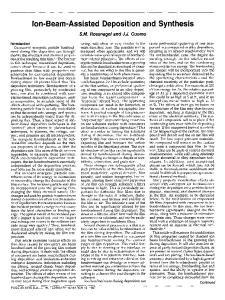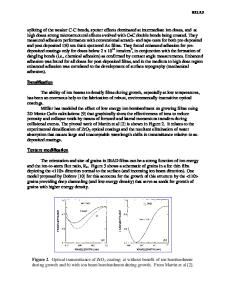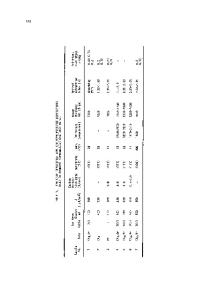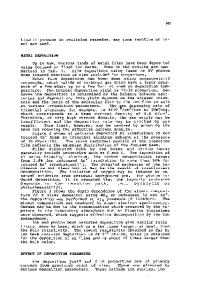Synthesis of Hard Nitride Coatings by ion Beam Assisted Deposition
- PDF / 1,223,084 Bytes
- 6 Pages / 414.72 x 648 pts Page_size
- 81 Downloads / 299 Views
current density was varied from 1to 8 A/m 2 (100 to 800 giA/cm 2 ). The arrival rate of nitrogen ions at the target surface is not trivial to determine, since the ion beam contains both N+ and N2 + ions, and measurement of the ion beam current density is not sufficient to determine the ion arrival rate. The relative amounts of N+ and N2 + in the ion beam have not been measured in this study, but other studies 9 have found that such plasma sources consist of around 11% N+ and 89 % N2 +, yielding 1.89 nitrogen atoms per unit charge. This value has been used in calculating the ion/atom (i.e., N/Cr) arrival ratios in this study. This calculation ignores the arrival of background nitrogen gas. The substrates used included silicon and stainless steel (for microscopy, XPS, and mechanical testing), carbon foil (for Rutherford backscattering analysis), and thin microscopy cover slips made of glass (for assessment of the stress state of the deposited films). The composition of the deposited films was measured by Rutherford backscattering spectrometry (RBS), using a 2 MeV He+ beam and a scattering angle of 1700. The simulation program RUMP 1 0 was used to fit the spectra and determine the composition and thickness of the films. The bonding of the coating material near the surface was examined with X-ray photoelectron spectroscopy (XPS), using a V.G. Scientific (Fisons) CLAM2 hemispherical analyzer with an AIKa•, 2 x-ray source and 20 eV pass energy. Specifics of the calibration and curve fitting procedure, including specific fitting parameters for each species shown, are given elsewhere. I1 The residual stress in the films was measured by depositing them onto 0.254-mm (0.01-inch) thick, 22.2-mm (0.875-inch) diameter glass cover slips. The stress in the deposited film caused the cover slips to bend, resulting in a convex or concave reflecting surface, depending on whether the film stress was tensile or compressive. The radius of curvature was estimated by finding the focal length of the concave side of the cover slip, and the average stress in the film was estimated using the stress/deflection equation for a thin film 12 using values of 70 GPa and 0.22 for the elastic modulus and Poisson's ratio of the glass slides. A CSEM-Revetest automatic scratch tester was used to evaluate the cohesive and adhesive strength of some of the coatings. 13 This test used a 200 pim diameter diamond tip and a load gradient of 5 N/mm; the resulting acoustic emission signal was monitored to note the relative loads at which the coating underwent cohesive and adhesive failure. RESULTS Rutherford backscattering analysis showed that the films consisted entirely of Cr and N, with only 3-5 atomic percent (at. %) oxygen as a contaminant. The nitrogen content of the coatings is shown in Figure 1 as a function of the approximate ion/atom arrival ratio. A clear dependence on the ion/atom arrival ratio is seen, with N compositions of 0 to 44 at. % achieved by varying the arrival ratio between 0 and 8. RBS also revealed that the ion/atom arrival ratio had a st
Data Loading...










